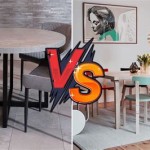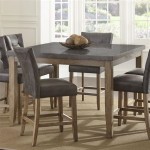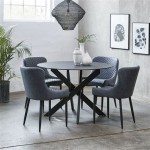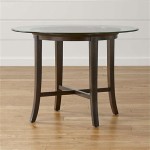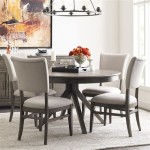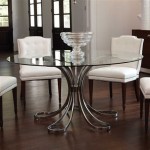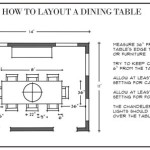Small French Country Dining Table: A Guide to Style and Selection
The small French country dining table represents a charming blend of rustic elegance and practical functionality. Characterized by its understated sophistication and warm, inviting aesthetic, it offers a solution for smaller dining spaces while maintaining a connection to traditional design principles. Understanding the key elements of this style allows for informed decisions when selecting a table that complements existing decor and fulfills specific needs.
Key Features of French Country Design
French country design, often referred to as "French Provincial" or "Country French," draws inspiration from the rural landscapes of France. It emphasizes natural materials, soft colors, and a sense of lived-in comfort. The style avoids harsh lines and embraces imperfections, lending an authentic and approachable feel to any space. Key characteristics include:
Material Choices: Wood is the dominant material, often featuring distressed finishes or painted surfaces in muted tones. Oak, pine, and fruitwoods are commonly used, imparting a sense of warmth and durability. Stone or ceramic accents may also be incorporated, particularly in tabletops or bases. The use of natural materials emphasizes the connection to the French countryside.
Color Palette: The color palette typically revolves around soft, muted hues. Creams, whites, light grays, and pastels are prevalent, creating a light and airy atmosphere. Accents of blues, yellows, and greens, often inspired by the French landscape, provide subtle pops of color without overwhelming the space. These colors create a calming and inviting ambiance suitable for dining.
Design Elements: Ornate carvings, curved legs (often cabriole style), and decorative aprons are common design elements found in French country furniture. These details add a touch of elegance and sophistication, reflecting the influence of traditional French furniture making. Distressed finishes, such as painted wood with visible brushstrokes or slightly chipped paint, further enhance the rustic charm of the style. The deliberate inclusion of imperfections contributes to the authenticity and character of the piece.
Scale and Proportion: While French country furniture can sometimes be grand, the small dining table emphasizes practicality and functionality within smaller spaces. Proportions are typically balanced and harmonious, ensuring the table fits comfortably within the designated area without overwhelming the room. This focus on scale makes the small French country dining table a versatile option for apartments, breakfast nooks, or smaller dining rooms.
Selecting the Right Size and Shape
Choosing the correct size and shape of a small French country dining table is crucial for maximizing space and ensuring comfortable seating. Careful consideration of the available area and the number of people typically dining will guide the selection process.
Measuring the Space: Before beginning the search, accurately measure the dining area. Consider the table's footprint and the necessary clearance around it for chairs and traffic flow. Aim for at least 36 inches of clearance between the table and any walls or other furniture. This allows for comfortable movement around the table and prevents a cramped feeling.
Shape Considerations: Round, square, and rectangular shapes are all viable options for small dining tables. Round tables are generally ideal for smaller spaces as they promote conversation and can often accommodate more people in a compact area. Square tables offer a clean and balanced look, suitable for smaller, symmetrical rooms. Rectangular tables are versatile and can be extended with leaves to accommodate larger gatherings, making them a practical choice for those who occasionally entertain.
Seating Capacity: Determine the typical number of people who will be using the table regularly. A round table with a diameter of 36 inches can comfortably seat 2-4 people, while a square table of the same dimensions can also accommodate 4. A rectangular table of 36 inches wide and 48 inches long can seat 4-6 people. If occasional larger gatherings are anticipated, consider a table with extension leaves that can be added to increase seating capacity.
Pedestal vs. Leg Design: The table's base design also impacts space utilization. Pedestal tables, featuring a single central support, offer more legroom and allow for greater flexibility in seating arrangements. Tables with four legs can be more stable, particularly for larger or heavier tables, but may restrict legroom depending on the leg placement.
Materials and Finishes for Durability and Aesthetics
The choice of materials and finishes contributes significantly to the table's durability, aesthetic appeal, and overall maintenance requirements. Understanding the characteristics of different materials and finishes allows for the selection of a table that can withstand daily use while complementing the desired French country aesthetic.
Wood Types: Oak, pine, and fruitwoods are popular choices for French country dining tables due to their durability, natural beauty, and ability to accept various finishes. Oak is a hardwood known for its strength and resistance to wear and tear, making it a practical choice for high-use tables. Pine is a softwood that is more affordable and readily available, offering a rustic look with its characteristic knots and grain patterns. Fruitwoods, such as cherry or walnut, provide a richer color and finer grain, adding a touch of elegance to the design.
Finish Options: Painted finishes are common in French country design, often featuring distressed or antique effects. Milk paint and chalk paint are popular choices as they provide a matte finish that can be easily distressed for a vintage look. Stained finishes highlight the natural grain of the wood, providing a warmer and more traditional appearance. Protective coatings, such as varnish or lacquer, are essential for safeguarding the wood from moisture, scratches, and stains. When selecting a finish, consider the level of maintenance required and the desired aesthetic.
Stone and Ceramic Accents: While wood is the primary material, stone or ceramic accents can enhance the table's visual appeal and durability. Stone tabletops, such as marble or granite, offer a luxurious and durable surface, resistant to heat and scratches. Ceramic tiles can be incorporated into the tabletop to create decorative patterns or provide a heat-resistant surface for hot dishes. These materials add a touch of sophistication and are easy to clean and maintain. However, they can be heavier and more expensive than wood.
Maintenance Considerations: Different materials and finishes require varying levels of maintenance. Painted wood surfaces may require occasional touch-ups to repair scratches or chips. Stained wood surfaces should be cleaned regularly with a damp cloth and occasionally treated with furniture polish to maintain their luster. Stone and ceramic surfaces are relatively easy to clean with mild soap and water. When selecting a table, consider the amount of time and effort required to maintain its appearance over time.
By carefully considering these aspects of French country dining table design, and the available space you have, this table will be a welcome addition to any home.

French Country In The Dining Room Love Grows Wild

French Country Solid Wood Leg Dining Table From Dutchcrafters Amish

French Country Farmhouse Harvest Dining Table Oak And Post

Homestyles French Countryside Oak And Rubbed White Dining Table 5518 30 The Home

Modern French Farmhouse Tables For Every Budget Monica Benavidez

French Country Square Dining Table

Antique French Walnut Round Dining Table From Full Bloom Cottage Shabbychicideasdiy Shabby Chic Room Design

30 Cozy French Country Dining Room For A Perfect Serene House In The Hills

Pre Order French Style Cream Bar Partition Integrated Retractable Movable Dining Table Island Small Household Multi Functional Storage

Small French Style Square Dining Table Available In Raw Mahogany Or Finished Penn And Bristle

